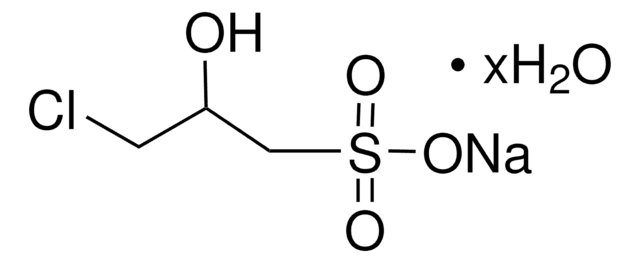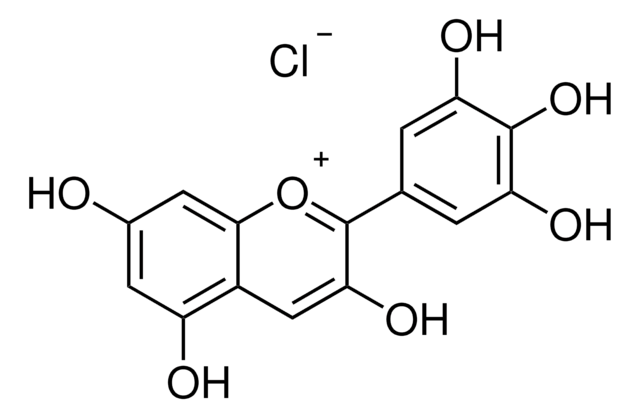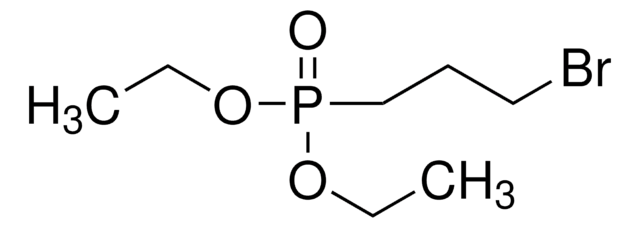137502
Sodium 2-bromoethanesulfonate
98%
Synonyme(s) :
2-Bromoethanesulfonic acid sodium salt
About This Item
Produits recommandés
Pureté
98%
Pf
283 °C (dec.) (lit.)
Solubilité
water: soluble 100 mg/mL, clear, colorless
Groupe fonctionnel
bromo
Chaîne SMILES
[Na+].[O-]S(=O)(=O)CCBr
InChI
1S/C2H5BrO3S.Na/c3-1-2-7(4,5)6;/h1-2H2,(H,4,5,6);/q;+1/p-1
Clé InChI
HNFOAHXBHLWKNF-UHFFFAOYSA-M
Vous recherchez des produits similaires ? Visite Guide de comparaison des produits
Description générale
Application
Code de la classe de stockage
13 - Non Combustible Solids
Classe de danger pour l'eau (WGK)
WGK 1
Point d'éclair (°F)
Not applicable
Point d'éclair (°C)
Not applicable
Équipement de protection individuelle
dust mask type N95 (US), Eyeshields, Gloves
Faites votre choix parmi les versions les plus récentes :
Déjà en possession de ce produit ?
Retrouvez la documentation relative aux produits que vous avez récemment achetés dans la Bibliothèque de documents.
Les clients ont également consulté
Notre équipe de scientifiques dispose d'une expérience dans tous les secteurs de la recherche, notamment en sciences de la vie, science des matériaux, synthèse chimique, chromatographie, analyse et dans de nombreux autres domaines..
Contacter notre Service technique








